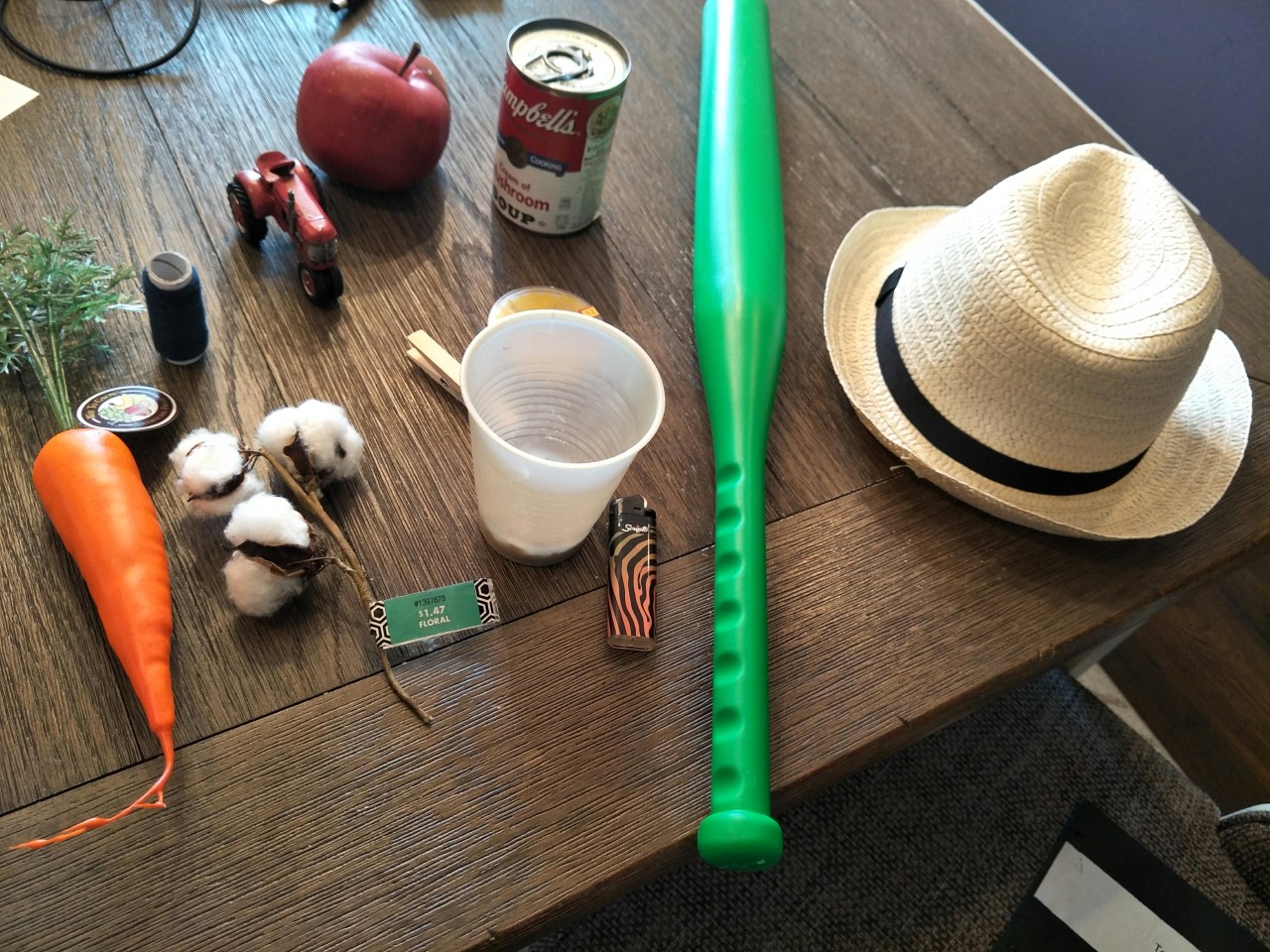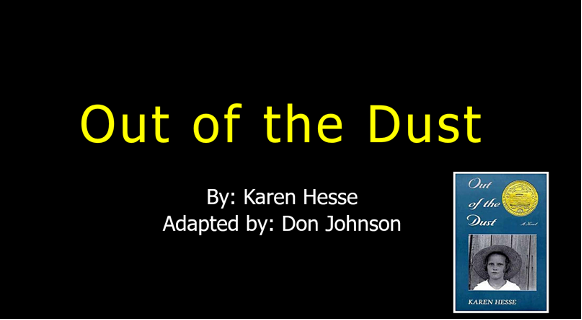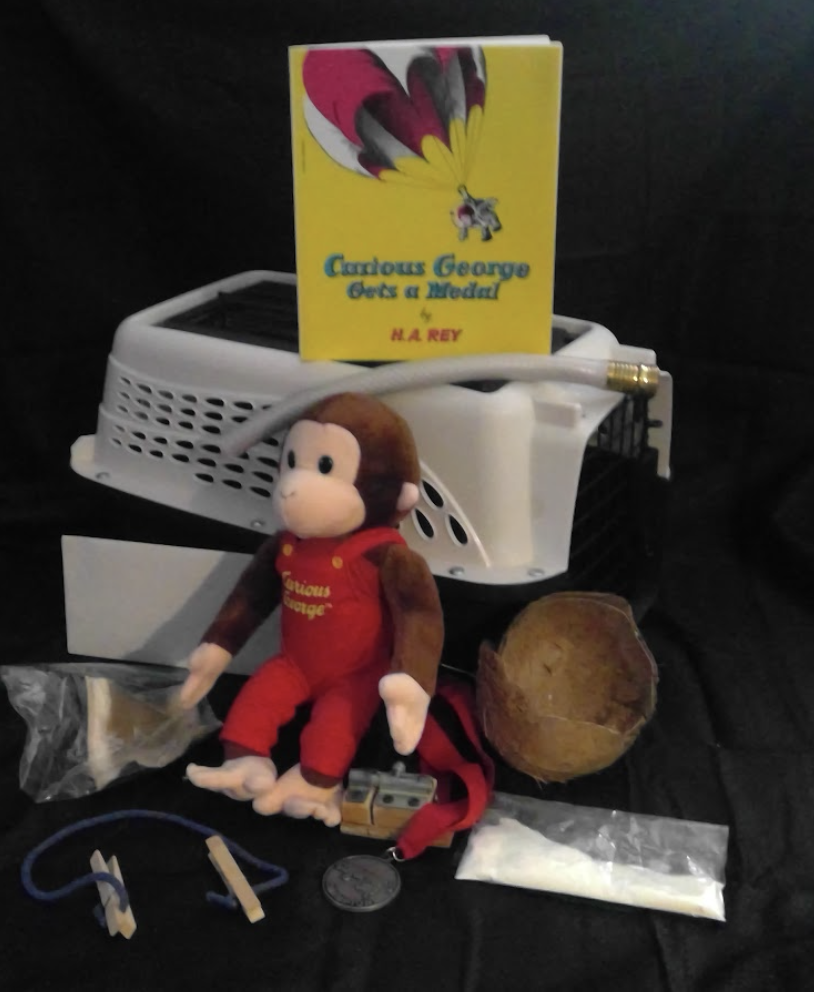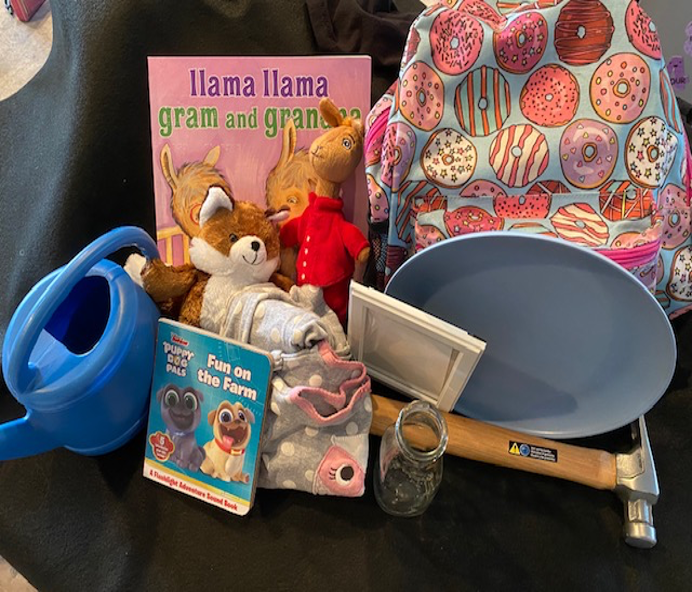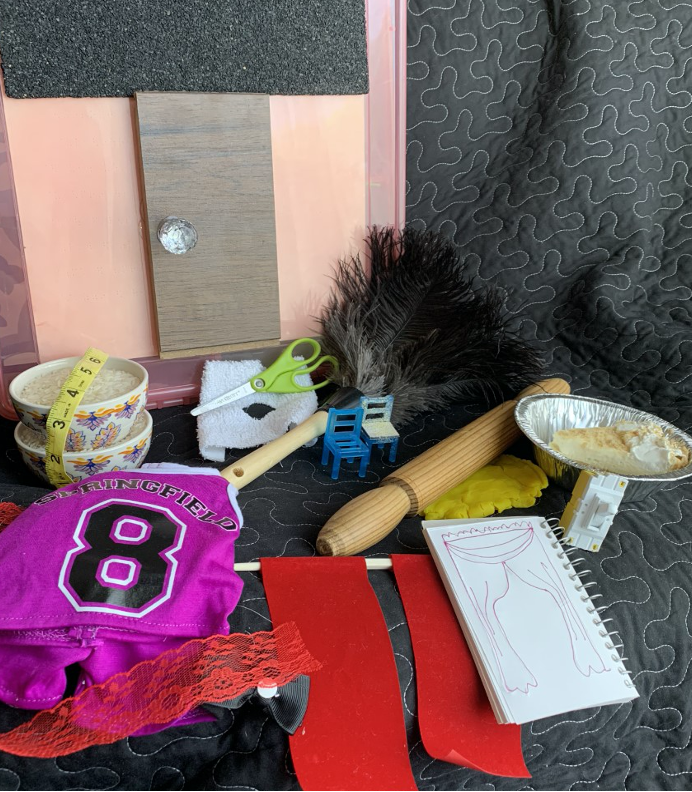As part of the graduate coursework for Visual Impairments and Multiple Disabilities in the Teacher Preparation Program in Visual Impairments at the University of Kentucky, students were asked to complete four projects: a Story Box with at least 10 objects that correspond to the story, picture communication symbols and tactile communication symbols designed to go along with the story, and a talking book to go along with the story or represent concepts from the story.
We are sharing them on Paths to Literacy and hope that others will use them!
Out of the Dust is a terrific novel for middle and high school students. It is a story of history, pain, resilience, growth and hope. The novel centers around a musically talented 14-year-old girl named Billie Jo who is struggling through The Dust Bowl and The Great Depression of 1930’s Midwest USA. She and her family face many problems and a great tragedy that makes the young girl evaluate her life in Oklahoma and her future plans of becoming a musician.
Story Box
The tactile objects that I chose for the story box are:
- Straw Hat—The front cover of the novel shows a young girl wearing a kind of straw hat. This is a convenient way to store the other items (minus the bat perhaps).
- Apple—The main character (Billie Jo) has a “fondness for apples” that we learn about in the very first chapter (poem).
- Canned good—The government (Uncle Sam) sends canned goods to the people of The Dust Bowl in Midwest USA. The people of the town are very grateful. There is also a time when an impoverished family lives in a schoolhouse for a short time and the townspeople give canned goods they can spare to the family.
- Cotton—Cotton is another crop that is being grown in the town by the farmers. In the last chapter of the novel, Billie Jo writes, “Daddy said he’d try some sorghum, maybe some cotton…” Billie Jo’s family was used to planting wheat but maybe a little “diversification” would be good for profits.
- Clothes pin—The people of the town and in this time period (1930s Great Depression/Dust Bowl) would not have had dryers and therefore would hang their clothes out to dry on long string/rope with clothes pins. The Dust Bowl made it very difficult/impossible to keep the clothes clean and remain hanging on the line.
- Dust (sand)—The story takes place during the Dust Bowl of the 1930s. Dust and rocks would swirl around, hitting and blinding people as they walked.
- Rocks—The story takes place during the Dust Bowl of the 1930s. Dust and rocks would swirl around, hitting and blinding people as they walked.
- Thread—Billie Jo and Ma use needle and thread to make a feed-sack nightgown for the baby that dies later. The nightgown is given to the baby at the church later in the story.
- Miniature Tractor—The story is set in a farmland community and Pa often needs to use the tractor to plant the crops. The tractor is also broken down throughout the book due to the strong dust storms corrupting the engine.
- Fire (Lighter)–The tragic accident that happens in the story is due to a horrendous fire. The mother catches on fire while trying to make coffee and then is accidentally severely burned by Billie Jo.
- Carrot—Billie Jo and her family live in a farm community/town where farmers are trying to grow crops but there is a drought and constant dust storms hindering all efforts.
- Box of needles— Billie Jo and Ma use needle and thread to make a feed-sack nightgown for the baby that dies later. The nightgown is given to the baby at the church later in the story.
- Plastic bat—Residents use a club (like a bat) to beat jack-rabbits who have been destroying the land/crops that people need to live/survive in the dust storms.
Background knowledge students may need to understand the story/novel:
Students will, of course, need to understand that the novel takes place during the Dust Bowl and The Great Depression. It may be necessary for the students to do some research on The Dust Bowl, The Great Depression and the author, Karen Hesse. The students should be somewhat familiar with the idea of poetry-style writing so that they can look for poetic devices (figurative language, formatting, etc.) .
The novel is a tragic story with a few items that need to be explained and/or handled with care. In any instance, the teacher or teachers should be in the vicinity to assist with the handling of certain objects. The lighter should not be left alone with any student, nor should the needles or plastic bat. These objects are merely props to assist in the teaching of “Out of the Dust”.
Strategies for Implementation of the Story Box:
- Make a prediction of subject – Before reading, the objects can be offered to students to explore and make predictions on what they think the story is about.
- Vocabulary – Before reading, after students have made predictions, present the objects one at a time and introduce the key vocabulary. Discuss how understanding key vocabulary words such as “dust,” “lighter,” and “crop” will help to better understand the story.
- Story supplemental – During reading, present the objects as they appear in the story. Allow time for the student to explore the object while it is presented in the book.
- Comprehension – After reading and other reinforcement activities, students can use the objects to answer comprehension questions.
- Reading with student interaction—After reading, students could be a given an object and told to present to the class the importance of their object in the story. “The lighter represents the fire that kills Ma and the baby and destroys farmland, crops and other items during the drought.”
- Social Studies—Some items, such as “dust” and “canned goods” could be given as a research activity. Students could be assigned to research the Dust Bowl and how the government assisted those affected in the 1930s (canned goods). They can research the history of certain crops or the tractor as well.
Tactile Communication Symbols
Tactile communication symbols were chosen to correspond to most of the objects in the story box and the picture communication symbols. A few of the symbols are portions of the objects from the story box. I have mounted the objects on tactile communication cards. Different colors and shapes were used to represent different categories. Each card has a large print, Arial font label, as well as a braille label, to make the symbol more accessible to students with visual impairments. The communication symbols are stored on a foam board with Velcro attachments. There are 11 tactile symbols in this set.
- White cards=Objects
- Yellow card=character/people
- Black card=expression/emotion
Symbols:
- Billie Jo—A yellow card with crown shape—Billie Jo is the main character/protagonist of the story. She is the narrator/journalist of the story. The story is told from her point of view (a 14-year-old girl living in Midwest USA during the 1930’s Dust Bowl). A piece of the straw hat from the story box was used to represent her. The girl on the cover of the book, “Out of the Dust”, is wearing a straw hat.
- Apple—A white card—The main character (Billie Jo) has a “fondness for apples” that we learn about in the very first chapter (poem). A red bead was used to represent an apple
- Cotton— A white card—Cotton is crop that is being grown in the town by the farmers. In the last chapter of the novel, Billie Jo writes, “Daddy said he’d try some sorghum, maybe some cotton…” Billie Jo’s family was used to planting wheat but maybe a little “diversification” would be good for profits. A small ball of cotton was used.
- Clothes pin—A white card—The people of the town and in this time period (1930s Great Depression/Dust Bowl) would not have dryers and therefore would hang their clothes out to dry on long string/rope with clothes pins. The Dust Bowl made it very difficult/impossible to keep the clothes clean and remain hanging on the line.
- Wheat—-A white card—Billie Jo’s family makes their money by growing wheat on their farmland. This is their primary source of income. A piece of the fake shrubbery/leaves from carrot in story box was used to represent wheat.
- Dust—A white card—The story takes place during the Dust Bowl of the 1930s. A small teaspoon of sand was glued to the card.
- Thread—A white card—Billie Jo and Ma use needle and thread to make a feed-sack nightgown for the baby that dies later. The nightgown is given to the baby at the church later in the story. A small spool of thread was placed on a card using Velcro.
- Tractor—A white card—The story is set in a farmland community and Pa often needs to use the tractor to plant the crops. The tractor is also broken down throughout the book due to the strong dust storms corrupting the engine. A plastic wheel from a child’s toy car was used to represent the tractor.
- Fire—A white card—The tragic accident that happens in the story is due to a horrendous fire. The mother catches on fire while trying to make coffee and then is accidentally severely burned by Billie Jo. An empty lighter was used to represent “fire”.
- Rocks—A white card–The story takes place during the Dust Bowl of the 1930s. Dust and rocks would swirl around, hitting and blinding people as he/she walked. 3 small pebbles were used to represent rocks.
- Depressed—A black card—After the tragic accident, Billie Jo and her father become depressed and lose hope. Billie Jo stops playing piano and “Pa” (father) stops talking to Billie Jo/becomes despondent. The story also takes place during the Dust Bowl and Great Depression. A piece of nylon string was used to make a frown or upside down smile (string curved downward) to symbolize the emotion of depression.
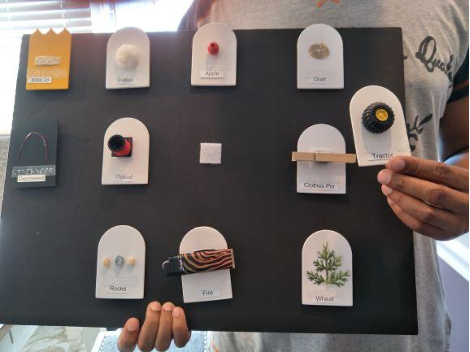
Implementing an Activity:
After letting student(s) listen to the story via my Out of the Dust Talking Book, the student(s) would be able to use these communication symbols to answer questions. The teacher would ask the following 17 questions, one at a time, and let the student choose a symbol for the answer, referring to the story as needed. The number of symbols presented to the student to choose from would be individualized based on student needs.
During reading, present the objects as they appear in the story. Allow time for the student to explore the object while it is presented in the book.
After reading, students could be a given an object and told to present to the class the importance of their object in the story. “The lighter represents the fire that kills Ma and the baby and destroys farmland, crops and other items during the drought.”
Comprehension Questions for Tactile Symbols
- What does Billie Jo say she has a fondness for in the first chapter (poem)? (Apples)
- What is one crop Billie Jo’s father decides he may try to grow in the last chapter (poem) of the novel–“Finding a Way”? (Cotton)
- What do Billie Jo and Ma use to hang up their clothes outside to dry? (Clothes pins)
- What crop is Billie Jo and her family’s main source of income? (Wheat)
- What crop is the family having difficulty growing throughout the novel? (Wheat)
- What kind of accident causes Ma to suffer and eventually die? (Fire—Being burned by kerosene)
- What does Billie Jo hate and fear because of the accident? (Fire)
- What does Pa use to plow the field? (Tractor)
- What breaks down and is difficult to fix because all dust has damaged the engine? (Tractor)
- What is the main antagonist of our story? (Dust)
- What covers the furniture, fills the glasses and is a constant pain throughout the novel? (Dust)
- What do Billie Jo and Ma use to make a nightgown for the baby that is coming? (needle and thread)
- What type of crop might some people grow during the Dust Bowl? (wheat or cotton)
- Who is the protagonist (main character) of the story? (Billie Jo)
- Who is writing these poetic diary entries? (Billie Jo)
- How do Billie Jo and Pa feel after the tragic accident? (Depressed)
- How do the people of the town feel, in general, during this terrible time (Dust Bowl and Great Depression)? (Depressed)
Picture Communications Symbols for “Out of the Dust”
Out of the Dust is a great novel written in poetic form for middle and high school students off all levels and backgrounds. I chose a variety of symbols that appear throughout the novel. The pictures that were chosen represent important moments throughout the story.
- Billie Jo—Main character of the story. She is the narrator/journalist of the story. The story is told from her point of view (a 14-year-old girl living in Midwest USA during the 1930’s Dust Bowl).
- Apple—The main character (Billie Jo) has a “fondness for apples” that we learn about in the very first chapter (poem).
- Baby—Billie Jo’s mother is pregnant with a baby boy at the beginning of the novel. After the mother is badly burned, both she and the baby suffer and the child dies soon after childbirth. Later, a baby is abandoned at the local church and Billie Jo would like to adopt the baby but her Pa decides it would not be best.
- Carrot crop—Billie Jo and her family live in a farm community/town where farmers are trying to grow crops but there is a drought and constant dust storms hindering all efforts.
- Piano—Billie Jo is a piano player and has dreams of being a pianist in her future.
- Canned goods—The government (Uncle Sam) sends canned goods to the people of The Dust Bowl in Midwest USA. The people of the town are very grateful. There is also a time when an impoverished family lives in a schoolhouse for a short time and the townspeople give canned goods they can spare to the family.
- Cotton—Cotton is another crop that is being grown in the town by the farmers. In the last chapter of the novel, Billie Jo writes, “Daddy said he’d try some sorghum, maybe some cotton…” Billie Jo’s family was used to planting wheat but maybe a little “diversification” would be good for profits.
- Clothes pin—The people of the town and in this time period (1930s Great Depression/Dust Bowl) would not have dryers and therefore would hang their clothes out to dry on long string/rope with clothes pins. The Dust Bowl made it very difficult/impossible to keep the clothes clean and remain hanging on the line.
- Wheat—-Billie Jo’s family makes their money by growing wheat on their farmland. This is their primary source of income.
- Dust—The story takes place during the Dust Bowl of the 1930s.
- Thread—Billie Jo and Ma use needle and thread to make a feed-sack nightgown for the baby that dies later. The nightgown is given to the baby at the church later in the story.
- Tractor—The story is set in a farmland community and Pa often needs to use the tractor to plant the crops. The tractor is also broken down throughout the book due to the strong dust storms corrupting the engine.
- Fire—The tragic accident that happens in the story is due to a horrendous fire. The mother catches on fire while trying to make coffee and then is accidentally severely burned by Billie Jo.
- Train Boxcar—Billie Jo decides to leave her father at one point after the accident to try and make it to California. She has a friend in California and believes her life is falling apart at home. She and her Dad are growing more and more distant due to the tragedy and overwhelming amounts of grief.
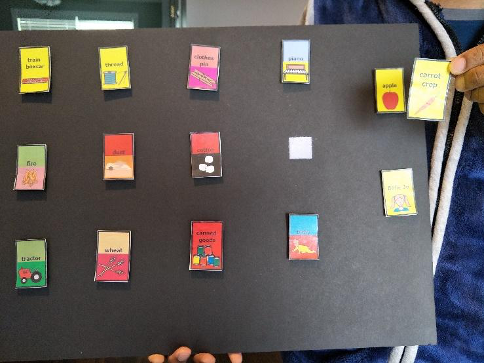
Comprehension Questions for Picture Symbols
- What does Billie Jo say she has a fondness for in the first chapter (poem)? (Apples)
- What instrument does Billie Jo play fiercely? What instrument does Billie Jo enjoy playing? (Piano)
- What 2 things does Billie Jo’s friend, Livie, draw in a picture with Billie Jo? (Apple and Piano)
- How does Billie Jo travel when she decides to leave her home and father because of grief and the terrible dust storms? (Train—Train boxcar)
- What does the government (Uncle Sam) send to the people suffering in the Dust Bowl as a form of compensation for their crop/income losses? (Canned goods)
- What is one crop Billie Jo’s father decides he may try to grow in the last chapter (poem) of the novel-“Finding a Way”? (Cotton)
- What do Billie Jo and Ma use to hang up their clothes outside to dry? (Clothes pins)
- Who is Franklin in the novel? (Billie Jo’s baby brother who dies soon after birth)
- What does the local minister find on the steps of the church one morning? (A baby)
- What crop is Billie Jo and her family’s main source of income? (Wheat)
- What crop is the family having difficulty growing throughout the novel? (Wheat)
- What kind of accident causes Ma to suffer and eventually die? (Fire—Being burned by kerosene)
- What does Billie Jo hate and fear because of the accident? (Fire)
- What does Pa use to plow the field? (Tractor)
- What breaks down and is difficult to fix because all dust has damaged the engine? (Tractor)
- What is the main antagonist of our story? (Dust)
- What covers the furniture, fills the glasses and is a constant pain throughout the novel? (Dust)
- What does Billie Jo and Ma use to make a nightgown for the baby that is coming? (needle and thread)
- What type of crop are the jack-rabbits probably eating/destroying that causes some residents to wage war against the animals? (carrot crops)
- What type of crop might some people grow during the Dust Bowl? (carrot, wheat or cotton)
- Who is the protagonist (main character) of the story? (Billie Jo)
- Who is writing these poetic diary entries? (Billie Jo)
Talking Book
This is a talking book I created for Out of the Dust by Karen Hesse. I chose simple pictures, i.e. boy playing piano, silverware, fire, etc. without too much complexity, large print and clearly spoken words. This is a condensed version of the entire book that will give a complete (albeit shortened) view of the poetic novel. Out of the Dust is a great book for older students with or without a disability and this talking book will allow children with lower functioning skills the ability to enjoy and understand the novel without any real difficulty. They can listen to the speaker (myself) read the more important passages (chapters) that will lead the listener on a path of tragedy and triumph. Each slide can be listened to individually and discussed with the student. What is Billie Jo feeling in this passage (poem)? I think the students will truly enjoy the novel.

